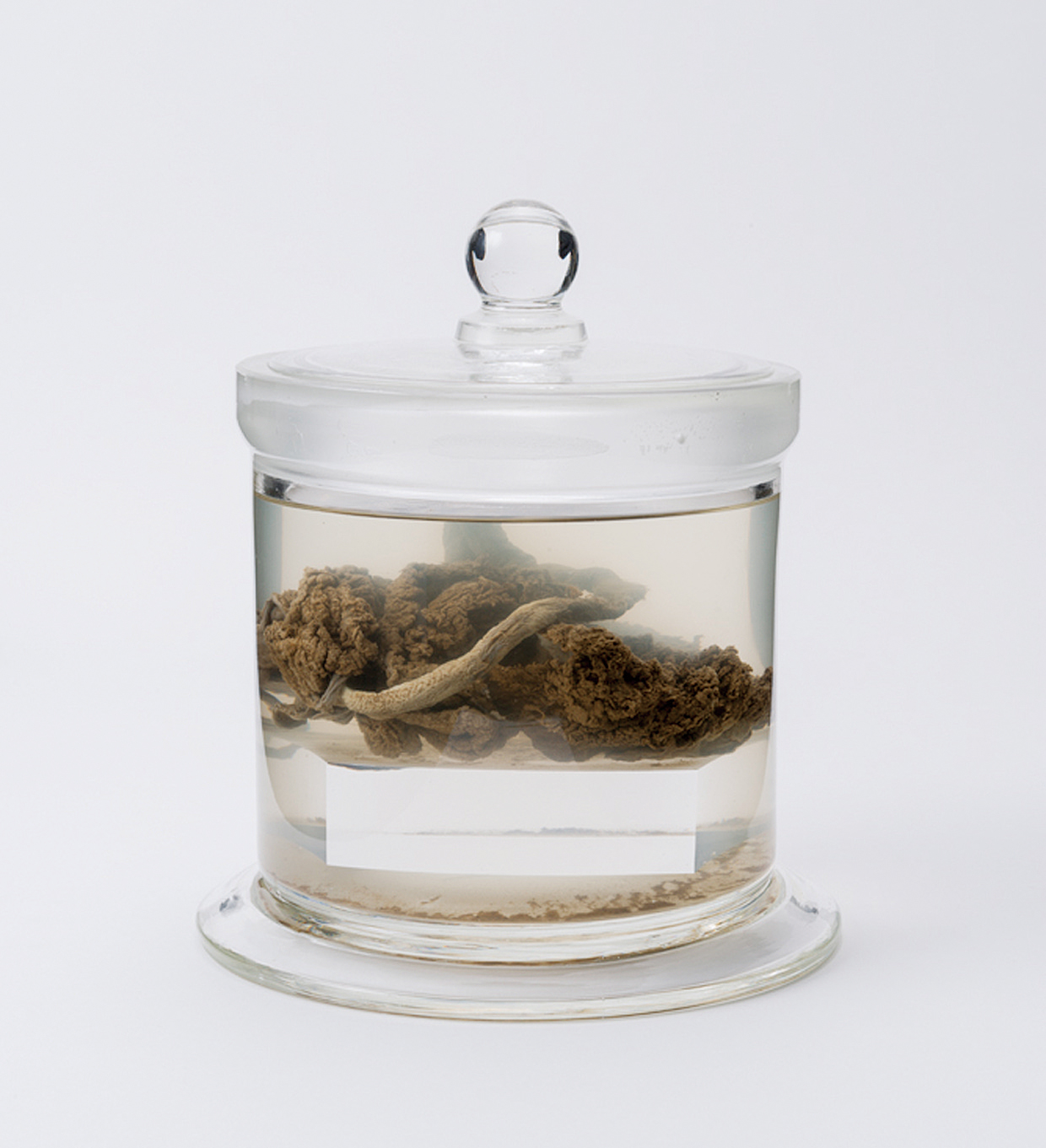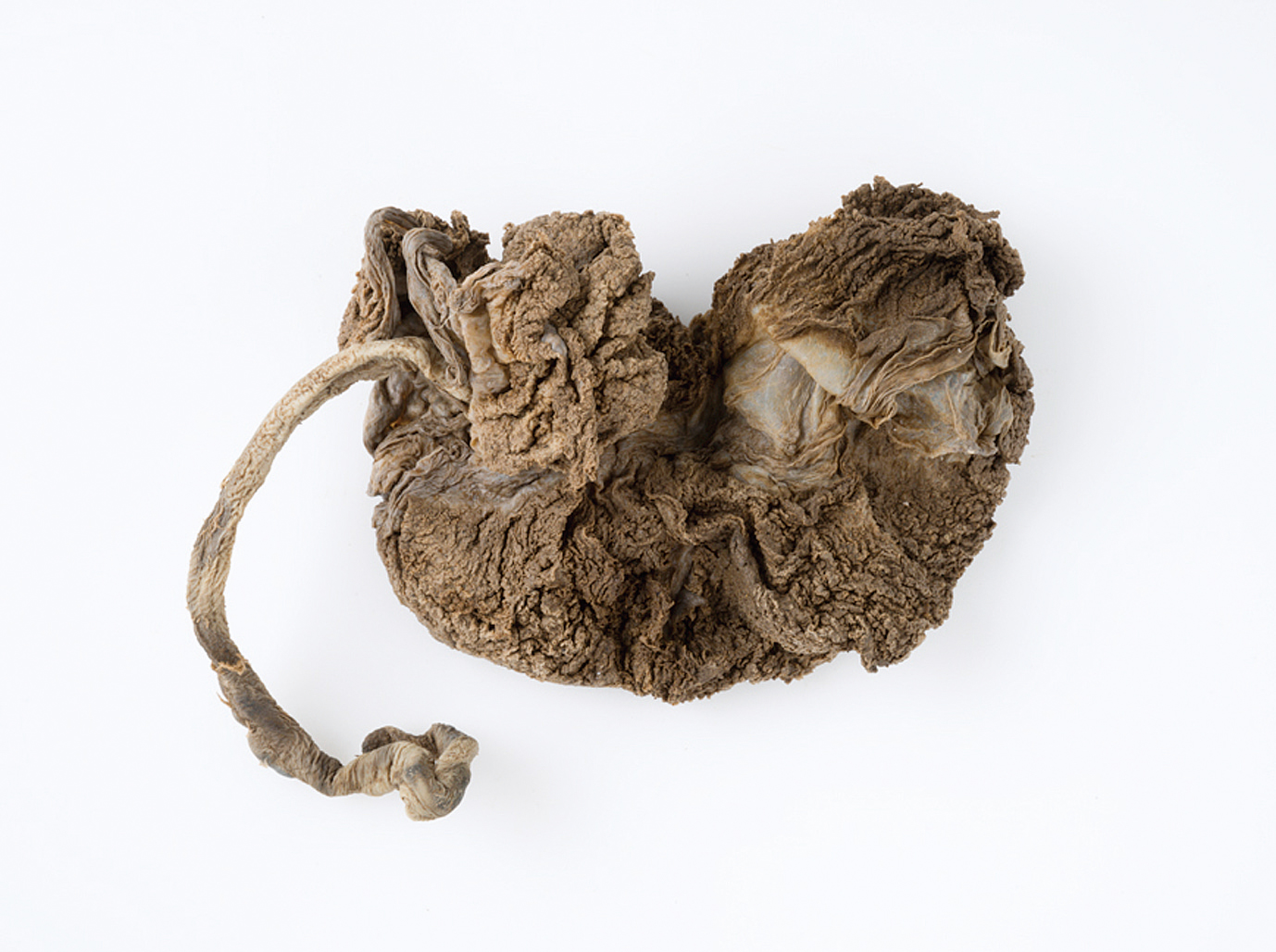B37
Placenta of aardvark
Aardvark is a rare species of mammals in Africa. Aardvark (Tsuchibuta) is named pig (buta) in Japanese, it is completely different species from the livestock pigs. This species belongs to the Afrotheria including elephants, sirenians, hyraxes, elephant shrews, etc. Only one species, aardvark, constitutes Order Tubulidentata and Family Orycteropodidae. In the classical taxonomy, Aardvark was regarded as a unique species because it is not similar to other taxa in many morphological characteristics. Although there is little diversity in Afrotheria, limbs of the aardvark functions as digging machine. We know that the species is highly adapted to underground lifestyle. Body weight is about 60 kg. The pointed fingers and toes were shown. By the strong flexion and extension of the forelimb and hindlimb, and the complicated movement of the elbow joint, the aardvark can crush and sweep out repeatedly the soil to the outside of the tunnel. This placenta was collected when the aardvark gave birth in Ueno Zoological Gardens (Tokyo). There are a few case of keeping and reproduction of the aardvarks in zoo. So, the opportunity in which we collect and examine the placenta has been rare. Among mammals, few studies have been recorded in the placenta of Afrotheria. Therefore, this specimen will bring information on the evolution of the placenta. The University Museum and Ueno Zoological Gardens have studied the aardvark. We investigate the soil-crushing mechanism by dissecting the dead bodies of the aardvark, and their reproductive system is being morphologically clarified by collecting the placenta. (Hideki Endo & Mayu Kusumi)
References
遠藤秀紀(2002)『哺乳類の進化』東京大学出版会。


